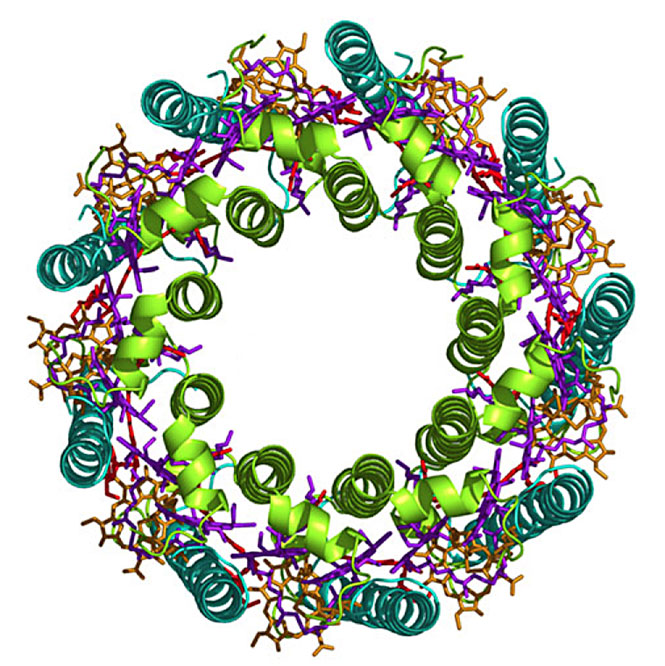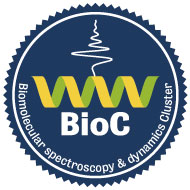Chemical Biophotonics
While biochemistry is concerned with the abstract chemical pathways relevant to biology, we are interested in the chemical physics that operates behind the screens. This involves the determination of the x-ray crystal structures of proteins as well as determining the changes in structure when proteins are solvated by (typically) water using NMR, circular dichroism, FTIR, ultrafast optical Kerr-effect spectroscopy, and terahertz time-domain spectroscopy. Of particular interest are the basic physical chemistry of chemical reactions inside proteins such as enzymes. These are studied using laser-light triggering or by complex computer simulation studies.
Our research addresses the microscopic structural dynamics of proteins, peptides, other (bio)molecules, and the surrounding aqueous solvent. This is critical to the understanding of the function of the living cell and to the design of artificial life. It therefore addresses the grand challenge of the understanding of the physics of life. This area is at the linchpin between physics, biology, and chemistry and thus underpins future artificial-life engineering. Although it is difficult to peer far into the future, it seems likely that such technologies will have applications in personalised medicine and energy generating technologies.

- The Adrian Lapthorn research group (protein structure)
- Chemical Photonics | Klaas Wynne lab
- The Kadodwala research group (chiral plasmonics)
- Ultrafast Chemical Physics (UCP) in the City of Glasgow
- Computational chemistry and simulations group led by Hans Senn
- The Biomolecular spectroscopy and dynamics Cluster (BioC) has been set up as a centre of excellence in biospectroscopy in Glasgow.


